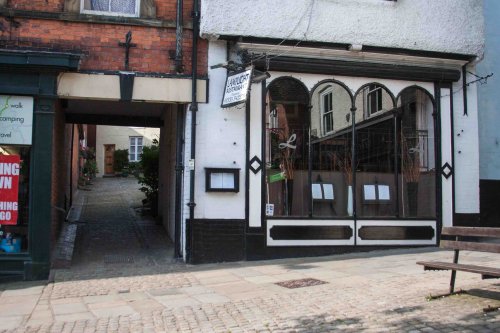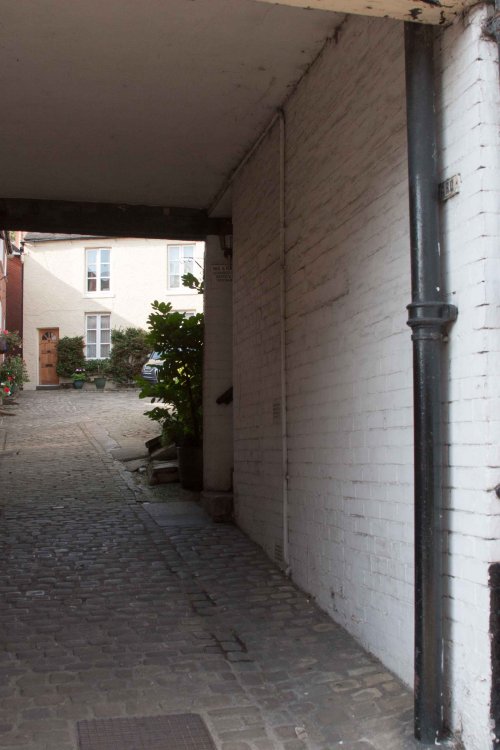There was once a chapel in this yard.
A number of “yards”, such as Tiger Yard, survive in Ashbourne. These were built on the medieval “burgage plots” – narrow strips of land with a building facing the street and a long croft (garden) behind. As the population expanded in the 18th Century, space between the buildings became scarce and parts of the medieval crofts were built on to form yards; these contained store rooms, workshops and cottages reached from the street by an alley at the side of the building. Yards were usually entered through a "tunnel and, in some cases, as here, the alley ran through to the narrow back lane at the end of the crofts.
The yards leading off the main streets were an important part of the close knit community in the Town centre. In 1851, there were about 25 yards housing about 750 people, about one quarter of the Town’s population. Most yards had a public house at the entrance, such as the Tiger Inn (now the Lamplight Restaurant) in this case. These close knit communities maintained a lively working-class social life in the Town, probably helped by the presence of a nearby public house.
This building is one of the surviving timber frame buildings in Town. From Tiger Yard you can see the Tudor timber and brick construction. Although the front is now rendered, the jettied nature of the timber-framed building underneath can be seen. Recently, timbers in the building were dated to 1493*.
In Georgian times, a brick front would have been added to "modernise" the building. In Victorian times, the front was rendered and decorative barge boards installed; and a large was glass window was added in the 20th Century for an Italian Restaurant. The Tiger Inn itself was closed in 1906 when it failed to meet the requirements of the new Licensing Act.
* See the report entitled 'The Development of Ashbourne Market Place in the 15th and 16th Centuries' at the bottom of the Building Features page. This has used tree-ring dating (dendrochronology) on a number of properties in the town.
A small Anglican Chapel was opened in Tiger Yard in 1846 to accommodate the poorer people of the Town who were unable to attend the St Oswald’s Church because of the number of private pews. At that time in the Anglican Church it was common for wealthy people to “buy” a pew for their own use , which would be left empty if they did not attend a service. The Tiger Yard Chapel was converted from the Literary Institute, itself an adoption of an earlier Baptist Chapel, and was provided with gas lighting and an organ. The pews in this chapel were free. The Chapel closed after a few years when a new Vicar, the Rev Errington, decided to provide further free seating in St Oswald’s Church., initiating a local conflict that became known locally as the “great pew battle”.
The cobbles and stone sets in Tiger Yard are a grade II listed monument.








